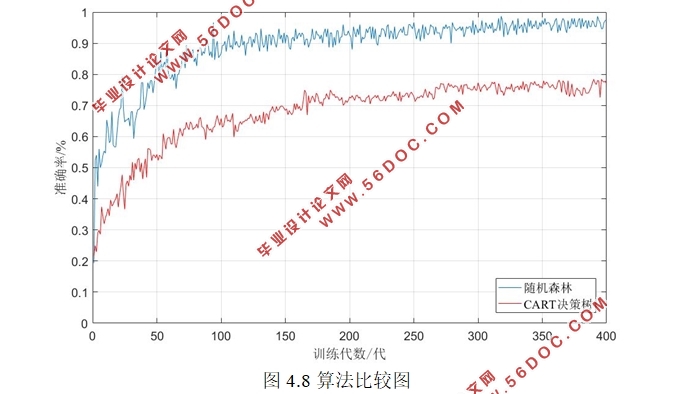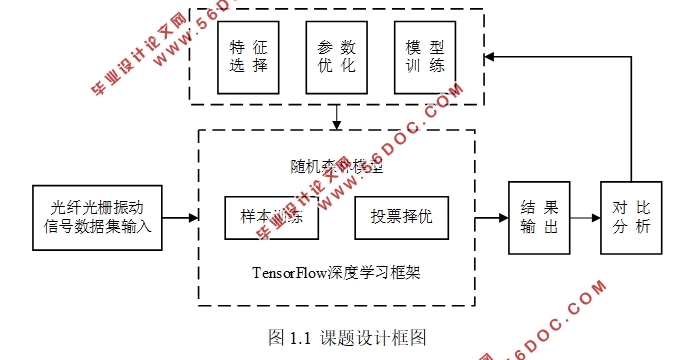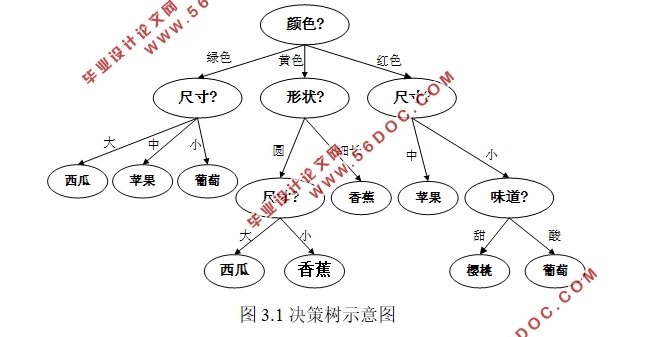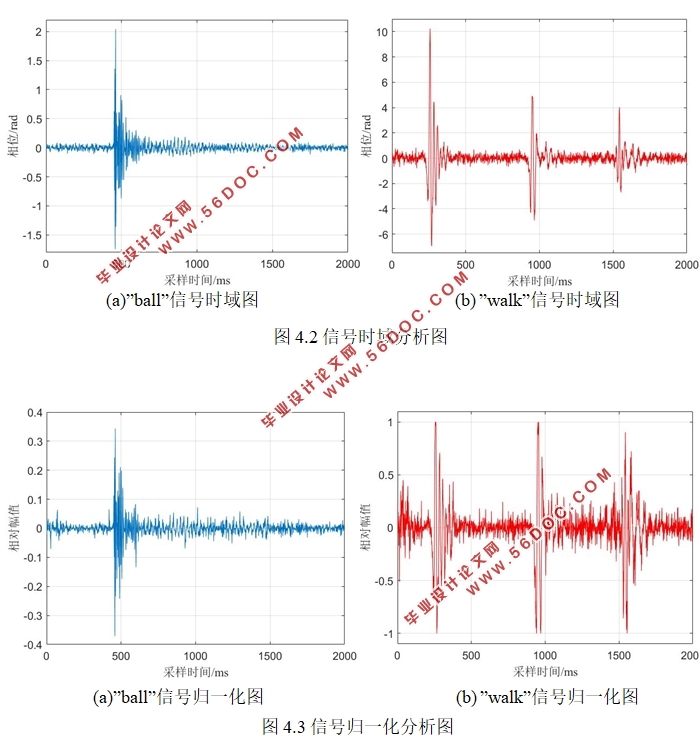基于决策树与随机森林的光纤光栅振动信号的识别与分类
来源:wenku7.com 资料编号:WK716697 资料等级:★★★★★ %E8%B5%84%E6%96%99%E7%BC%96%E5%8F%B7%EF%BC%9AWK716697
以下是资料介绍,如需要完整的请充值下载。
1.无需注册登录,支付后按照提示操作即可获取该资料.
2.资料以网页介绍的为准,下载后不会有水印.资料仅供学习参考之用. 密 保 惠 帮助
资料介绍
基于决策树与随机森林的光纤光栅振动信号的识别与分类(任务书,开题报告,外文翻译,论文16000字)
摘要
随着光纤传感技术高速发展,分布式声传感系统(Distributed Acoustic Sensing,DAS)成为了实现周界安防监测等多领域的常用技术。为了解决其不同的环境下所采集到的传感信号复杂多变,难以辨识和区分的问题,本文对分布式光纤光栅振动传感信号的分类和识别进行了研究与设计。
本文的工作主要包括两部分。一方面,本文对光纤光栅振动信号的数据处理进行了理论分析和实现。完成了对原始振动信号数据的清洗和归一化,并进行数据的特征选定和分割处理,为后续算法实现打下了基础。另一方面,本设计以随机森林算法为核心,通过对处理后振动信号数据的学习和训练,完成了对振动信号分类识别的功能。
设计结果表明,随机森林算法对于光纤光栅振动信号有较好的分类识别效果,同时能够降低泛化误差,避免过拟合。本文最终实现了一种具有较高易用度与准确性的光纤光栅振动信号分类识别的设计,该设计测试识别的准确率达到了90%。
关键词:决策树;随机森林;光纤光栅信号数据处理;信号分类识别
Abstract
With the rapid development of information technology, distributed acoustic sensing system (DAS) has become a common technology to realize distributed fiber grating monitoring.In order to solve the problem that the sensor signals collected in different environments are complex and changeable and difficult to be identified and distinguished, this paper studies and designs the cla-ssification and recognition of distributed FBG vibration sensor signals.
This paper mainly includes two parts.On the one hand, the data processing of FBG vibrati-on signal is theoretically analyzed and realized in this paper.By cleaning and normalizing the or-iginal vibration signal data, and selecting and segmenting the characteristics of the data, it lays a foundation for the implementation of subsequent algorithms.On the other hand, this design takes the random forest algorithm as the core, and through the learning and training of the processed vibration signal data, the function of vibration signal classification and recognition is completed.
The design results show that the random forest algorithm has better classification and reco-gnition effect for vibration signals, and can reduce generalization error and avoid overfitting.In this paper, a novel vibration signal classification and recognition design with high usability and accuracy is finally implemented.
Keywords:Decision tree;Random forest;Fiber grating signal data processing;Signal classification and recognition




目录
摘要 I
Abstract II
第1章绪论 1
1.1 研究背景与意义 1
1.2 国内外研究现状 1
1.2.1 光纤振动信号识别的研究现状 1
1.2.2 随机森林算法的研究现状 2
1.3 本文的主要工作与结构安排 2
1.3.1本文的主要工作 2
1.3.2本文的结构 3
第2章光纤光栅振动信号数据处理方法 5
2.1光纤光栅数据预处理 5
2.1.1 数据清洗 5
2.2.2 数据归一化 6
2.2光纤光栅数据转换 7
2.2.1 数据特征提取 7
2.2.2 数据分割 9
2.3 本章小结 9
第3章随机森林算法的相关理论 10
3.1 决策树 10
3.1.1 决策树原理 10
3.1.2 决策树算法划分 11
3.2 集成学习 13
3.2.1 基分类器构造与集成 13
3.2.2 袋装算法 14
3.3 随机森林 14
3.3.1 随机森林的定义 14
3.3.2 随机森林的泛化误差 15
3.3.3 随机森林算法流程 16
3.4 本章小结 16
第4章设计结果及其分析 17
4.1 设计流程与实验环境 17
4.2 光纤光栅数据处理 18
4.2.1 数据采集与清洗 18
4.2.2 数据归一化 18
4.2.3 特征提取与数据分割 19
4.3 算法模型设计 20
4.3.1 模型构建 20
4.3.2 模型实现 20
4.3.3 测试结果与分析 22
4.4 本章小结 23
第5章总结与展望 24
5.1 全文总结 24
5.2 工作展望 24
参考文献 25
致谢 27
|









